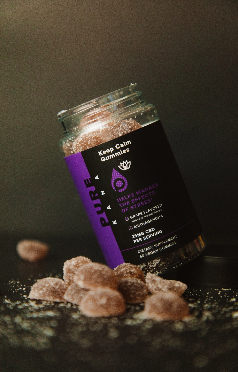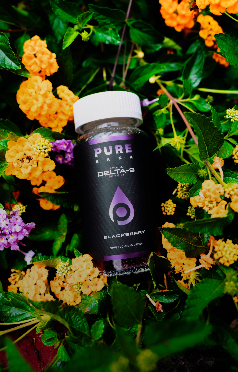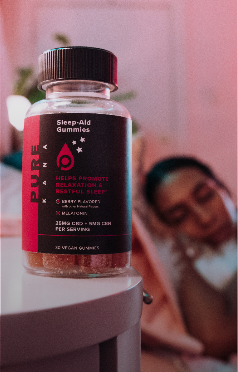Those interested in cannabinoids may have heard of decarboxylation. It sounds like a very complex, scientific term, but it’s actually quite simple. It refers to the process of heating the cannabinoids, so they transform from their acidic form into their active form.
In other words, decarboxylation for CBD works by converting CBDa (cannabidiolic acid) into CBD. There remain questions of why this process is important and what the difference is between CBD and CBDa. This brief article answers those questions and more, so keep reading.
What Is Decarboxylation?
Decarboxylation, also called decarbing, occurs when raw plant matter is heated. The acidic cannabinoids within change chemical structure, becoming neutral (non-acidic).
Chemically, the change involves the removal of a -COOH bond, called a carboxyl. When the cannabinoids lose this carboxyl, they become neutral. High temperatures are used to achieve this shedding and change in the chemical structure.
CBD Decarboxylation
For CBD, decarboxylation means the transformation of CBDa into CBD. Notably, CBDa is a great compound in its own right, often sold alongside CBD on the supplements market.
The decarboxylation of CBD occurs in the same way as mentioned above. When exposed to heat, CBDa sheds it’s extra -COOH molecule and becomes CBD, a non-acidic cannabinoid.
There are technically two ways that this process can occur:
- Naturally: As raw cannabis matures, it is naturally exposed to sunlight and air. Eventually, the acidic compounds become cannabinoids like CBD, but this can take a very long time.
- Manually: An artificial heat source is applied to raw hemp, forcing CBDa to convert into CBD more rapidly. This is what happens during smoking and vaping when raw hemp is used.
Before infusing hemp extract into various supplements, manufacturers manually decarb hemp buds to create an abundance of CBD.
How Does Decarboxylation Work?
If you’re interested in science, then this part is for you. Cannabinoid acids in their raw form have 22 carbon atoms, 4 oxygen atoms, and 30 hydrogen atoms. They also have a carboxyl group with one carbon atom and two oxygen atoms.
Decarboxylation is a chemical reaction that removes the carboxyl group (-COOH) and releases carbon dioxide. The molecular mass of the cannabinoid acid decreases (THCa’s mass decreases by 12%) as it becomes a cannabinoid.
The resulting cannabinoids are then ‘active’ because they can work with the body’s endocannabinoid system more efficiently. There are multiple ways to trigger this process; we cover the best way to decarb weed a little later.
Does CBD Need to Be Decarboxylated?
Technically, decarbing CBD is not a necessity. Some people choose to use CBDa, for reasons that will become clear in the section below.
However, most products use decarboxylated CBD because it is believed to be more effective. The best example of this is to turn to THC.
It has become somewhat of a trend to consume raw marijuana in smoothies and cooking. However, raw bud only contains acidic cannabinoids like THCa. If you drink a raw cannabis smoothie, you will notice that you don’t get the effect of being high, which is commonly associated with cannabis plants. This is because THCa is not powerful enough to cause intoxication. For that, the cannabis must be decarbed to turn the THCa into THC.
Clearly, cannabinoid acids and their neutral counterparts have very different effects. Many people believe that, to reap the most benefits from hemp, the CBD should be decarboxylated.
Decarboxylated vs non-Decarboxylated CBD
Although CBD is more popular, CBDa is not without benefits. Here are some of the common uses of each.
The benefits of non-Decarboxylated CBD (CBDa) may include:
- Potential anticonvulsant
- Could combat nausea
- Could reduce inflammation
Meanwhile, the benefits of decarboxylated CBD are numerous. Typically, it is sold as a general wellness supplement that could have a positive impact on overall health and wellbeing.
Studies are still ongoing into both of these compounds. It’s unclear how big the difference is between the two, but most people opt for the decarboxylated form.
How to Decarb CBD
Decarbing cannabis (hemp) is a really simple process. It’s possible to do it on a small scale at home, though it is more often done on a much larger scale.
- Preheat the oven to 225˚F and set the rack on the middle shelf.
- Line a baking sheet with aluminium foil.
- Break up the hemp flower into smaller chunks or grind it up. Do not grind it too fine, or it will burn. Scatter it across the foil, then place another sheet of foil on top.
- Bake for 45 minutes, then remove from the oven and allow to cool.
- Place in a storage container for future use.
Decarbed hemp is perfect for cooking with, so it’s good to have on hand for delicious recipes.
Decarboxylation Temperature
Don’t worry about getting the temperature exact when decarbing. The sweet spot is around 230-250˚F. Don’t go too high, or the flower will burn.
That said, each cannabinoid converts at a slightly different optimal temperature. The optimal CBD activation temperature seems to be about 230˚F, so it’s best to stick to the lower end of the scale when decarbing hemp.
Summary on CBD Decarboxylation
The decarboxylation of CBD is a pretty simple process that involves heating hemp until the cannabinoid acids become neutral cannabinoids. Although it is not essential in order to enjoy hemp products, it is necessary if you want to use CBD.
Decarboxylation can occur naturally, but manufacturers tend to speed up the process to make the most out of hemp plants.
When dealing with hemp at home, it’s necessary to decarb it if you want to make CBD edibles. Otherwise, raw hemp contains CBDa. While CBDa has its own potentially beneficial properties, it is not yet as common as CBD.
Hopefully, this article taught you all you need to know about the basics of decarbing CBD. Check out our other blogs for more information on hemp, or visit our store to see our high-quality CBD products.












 https://premiumjane.com/
https://premiumjane.com/